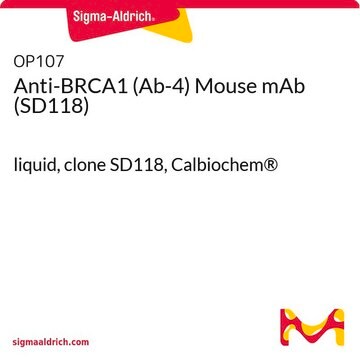C4859
Cycloheximide solution
Ready-Made Solution, microbial, 100 mg/mL in DMSO, Suitable for cell culture
Sinónimos:
CHX
About This Item
Productos recomendados
biological source
microbial
Quality Level
description
suitable for testing specifications (CHO C. growth inhibitor)
form
solution
concentration
100 mg/mL in DMSO
solubility
DMSO: soluble
antibiotic activity spectrum
fungi
yeast
mode of action
protein synthesis | interferes
storage temp.
2-8°C
SMILES string
O=C1[C@@]([C@H](O)CC2CC(NC(C2)=O)=O)([H])C[C@@H](C)C[C@@H]1C
InChI
1S/C15H23NO4/c1-8-3-9(2)15(20)11(4-8)12(17)5-10-6-13(18)16-14(19)7-10/h8-12,17H,3-7H2,1-2H3,(H,16,18,19)/t8-,9-,11-,12+/m0/s1
InChI key
YPHMISFOHDHNIV-FSZOTQKASA-N
Gene Information
human ... FKBP1A(2280) , PIN1(5300)
¿Está buscando productos similares? Visita Guía de comparación de productos
Categorías relacionadas
Specificity
Biochem/physiol Actions
Other Notes
signalword
Danger
Hazard Classifications
Acute Tox. 3 Oral - Aquatic Chronic 3 - Eye Irrit. 2 - Muta. 2 - Repr. 1B - Skin Irrit. 2
Storage Class
6.1C - Combustible acute toxic Cat.3 / toxic compounds or compounds which causing chronic effects
wgk_germany
WGK 3
flash_point_f
188.6 °F - closed cup
flash_point_c
87 °C - closed cup
Certificados de análisis (COA)
Busque Certificados de análisis (COA) introduciendo el número de lote del producto. Los números de lote se encuentran en la etiqueta del producto después de las palabras «Lot» o «Batch»
¿Ya tiene este producto?
Encuentre la documentación para los productos que ha comprado recientemente en la Biblioteca de documentos.
Los clientes también vieron
Nuestro equipo de científicos tiene experiencia en todas las áreas de investigación: Ciencias de la vida, Ciencia de los materiales, Síntesis química, Cromatografía, Analítica y muchas otras.
Póngase en contacto con el Servicio técnico











